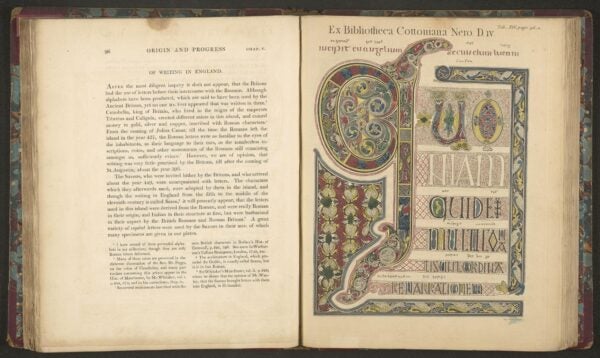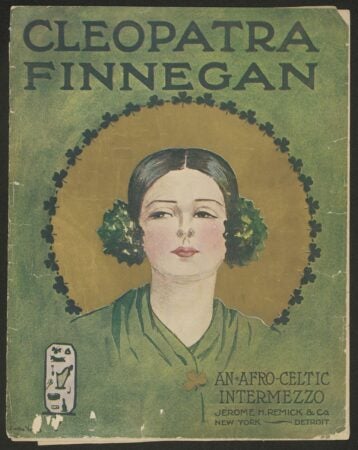Visionary collaboration: How the Johns Hopkins Visual Resources Collection used JSTOR Forum to build cross-campus partnerships and amplify university collections

Thomas Astle, and digitized by Sheridan Libraries Digitization. The Origin and Progress of Writing, as Well Hieroglyphic as Elementary, Illustrated by Engravings Taken from Marbles, Manuscripts, and Charters Ancient and Modern : Also Some Account of the Origin and Progress of Printing. published 1803. Johns Hopkins University, Sheridan Libraries, George Peabody Library, Baltimore, Maryland, United States.
In the spring of 2020, Johns Hopkins University was, like institutions worldwide, suddenly shut down due to the COVID-19 pandemic. As instructors scrambled to move courses online and students adjusted to their new reality of virtual learning, the Sheridan Libraries Special Collections team found themselves unable to offer use of their materials with in-person access as required for courses, and, while they could digitize and share materials piecemeal, they lacked a central location to share them and the ability to catalog them at the item level. With many faculty members wanting to teach with special collections that fall, and no sign of an end to the pandemic, Special Collections teamed up with Visual Resources Curator Lael Ensor-Bennett and JSTOR Forum, starting an ongoing collaboration that has positioned the Visual Resources Collection (VRC) as an invaluable partner in meeting collection goals across the University.
Getting started
In truth, Lael and her colleague, Academic Liaison for Art History, Film/Media Studies & Near Eastern Studies Donald Juedes, had been wanting to partner on Special Collections digitization for some time. They’d been using JSTOR Forum since 2015 to build, catalog, and publish collections of visual materials to Artstor. Having found immense value in it themselves, they saw that it could also be useful in enhancing the accessibility and impact of collections from across the university. At around the same time as the COVID shutdown, it also became possible to publish from Forum to JSTOR, a platform already used widely across disciplines, and to have unique and customized landing pages for institutions and collections. Lael credits these developments for igniting interest: “Having a nice, pretty landing page for the Johns Hopkins collections, then landing pages for each specific collection, makes it easy to navigate. It really helped jump start the other collections.”
With initial buy-in secured, Lael and Don began working on a pilot program with Special Collections Head of Materials Management Amy Kimball and the Digitization Unit’s Digitization Specialist Cameron Hanley to assess project requirements and feasibility. They determined a flexible process that begins with selecting items for digitization all the way through to publishing on JSTOR. Lael says, “Our workflow depends on the collection and the motivation for digitization. Sometimes it will start with a request: let’s say someone wants ‘X’ digitized. I’ll chat with the head of special collections to determine whether digitizing will in any way damage the object. We’ll explore whether the object is already freely available online. The special collections head will make the final decision. Other times, I’ll talk to the curators and ask what they think might be good to include. Are students or faculty interested in particular items? Then we move to digitizing, collect the images in a shared folder, process and catalog the images, perform quality control, and upload to Forum.”

American Anti-Slavery Society, The Johns Hopkins University Sheridan Libraries, and American Anti-Slavery Society. American Anti-Slavery Reporter. Reports. American Anti-Slavery Society, 1834.
What it’s worth
The effort takes a village—but it’s worth it. The collections themselves are tangible—and compelling—evidence of the collaborative work Lael directs at the institution, but the intangible positive results are important to note, as well. “I think this has helped us in the sense that it has brought us together as colleagues and we’ve had more conversations about what we should add to the collection. It’s helped us work together more effectively; librarians now know that they can call on us. We know we can rely on each other and our areas of expertise. I love the conversations I have with my colleagues.”
The collaborative work includes and benefits students as well. To attract potential collaborators, Lael sends out a mailing at the beginning of a new semester to graduate students, faculty, and others who may be interested in using the collections to teach or do research. Meanwhile, VRC graduate students work on projects they are already interested in. Lael says, “I try to make it possible, when I can, to give them more of the intellectual work that aligns with their interests and can help them in the future. Before COVID, they mostly did boring data work. Now I am more often able to give them projects they can put on their CVs.” Outside of the VRC, the library runs the Special Collections First-Year Fellows program for undergraduates. “They do special collections stuff, beginning with doing original research on a collection. For example, first year students worked on the Collection of Middle East-inspired Sheet Music, then presented their research the next year during student orientation.”
The sense of community Lael refers to extends beyond the institution itself. “This work is helping everybody. It is good for the VRC, it’s good for Hopkins, good for the library, and good for the people using the collections. Our discovery has improved, so we pop up more readily now. It brings people to the special collections, and helps students figure out topics for their thesis and other work,” she says.
Advice for others
By every measure, Lael’s work to enhance the impact and discoverability of more Hopkins collections has been a success. Wanting to empower more Forum participants to become digital collections leaders at their institutions as well, we asked what advice she’d give to others. Here’s what she had to say:
- Don’t try to do it all at once. “I think this has worked well because we didn’t try to do everything, and we didn’t try to sell that,” she says. “We started out with things that had already been digitized, but weren’t really available anywhere, or things that people really needed for a course or research and then things that are nice succinct collections that would be really great to have online.”
- Figure out delegation and workflows early. Determine who has the skills and time to do what, and develop a workflow guide and checklist to keep track of what needs to be done, by whom, and when. This also helps with encouraging collaboration by showing the manageable workload.
- Take advantage of Forum’s flexibility. Lael notes that “Containers and Compilations really help with adding as you go, expanding collections as you have time. Everything is editable except for the link. Flexibility in Forum really helps with that.”
For Hopkins, JSTOR Forum is more than a service. It’s also become a way to generate an interdisciplinary collaboration of students, librarians, faculty, curators, researchers, and archivists. At ITHAKA, we’re excited by this approach, and hope that Lael’s story can help other institutions get the most out of Forum, and empower other visual resources professionals to lead the way.
Learn more about how your organization can build, catalog, and publish your collections with JSTOR Forum. And for a guided tour of Johns Hopkins’ Collection of Middle East-inspired Sheet Music, check out this article from JSTOR Daily.
